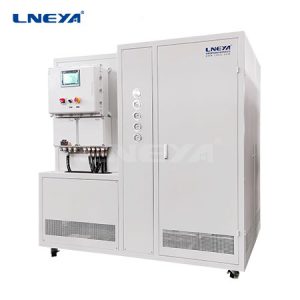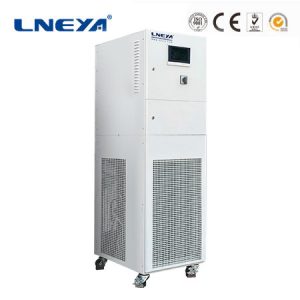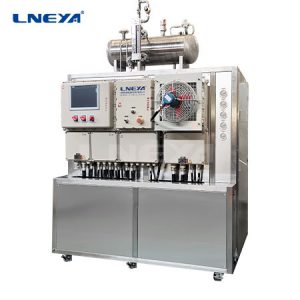Que tipo de sistema de controlo de temperatura é necessário para a preparação de esfregaços na indústria farmacêutica?
In the pharmaceutical industry, negative pressure drying and smear preparation have specific requirements for temperature control, and usually require precise and adjustable temperature control devices to ensure product quality and process stability. Negative pressure drying usually refers to the drying process carried out under conditions below atmospheric pressure. This drying method can accelerate the evaporation rate and is suitable for drying heat sensitive materials to reduce the risk of material damage caused by heat.
In negative pressure drying, the temperature control unit needs to have the following characteristics:
Accurate temperature control ability:
It can achieve precise adjustment and stable control of temperature, ensuring that the temperature during the drying process is maintained within the safe range allowed by the material, and avoiding product quality degradation or denaturation caused by high temperature.
Automation control:
Using PID (proportional integral derivative) controllers or other advanced automatic control systems, automatically adjust heating or cooling according to the set temperature curve to respond to real-time temperature changes.
Negative pressure adaptability:
Able to work stably in negative pressure environments, including corrosion-resistant materials and sealing design, to prevent external pollutants from entering and ensure stable pressure and temperature in the drying room.
Data recording and monitoring:
Integrated data recording function facilitates tracking and analysis of temperature changes during the drying process, meeting the recording requirements of GMP standards.

Smear preparation involves uniformly coating the sample on a glass slide and then drying it for microscopic observation or further analysis. During this process, the requirements for temperature control devices focus on:
Accurate temperature control ability:
It can achieve precise adjustment and stable control of temperature, ensuring that the temperature during the drying process is maintained within the safe range allowed by the material, and avoiding product quality degradation or denaturation caused by high temperature.
Mild drying:
It is necessary to provide a mild and uniform heat source to avoid deformation or damage to the sample due to rapid or localized overheating.
Temperature uniformity:
Ensure uniform temperature distribution throughout the entire drying area to avoid inconsistent sample drying that may affect subsequent analysis results.
Adjustable temperature range:
The temperature range suitable for coating drying is relatively narrow, and the temperature control device needs to be able to finely adjust within this range, usually from room temperature to moderate temperature (if not exceeding 60 ℃).
Easy to operate and maintain:
Considering that smear preparation may occur frequently in the laboratory, the equipment needs to be simple and easy to use, as well as easy to clean and maintain on a daily basis.
In summary, whether it is negative pressure drying or smear preparation, the pharmaceutical industry usually adopts temperature control devices with highly precise temperature control capabilities, automated control, good environmental adaptability, and user-friendly features, such as PID regulated electric constant temperature drying ovens, precision laboratory ovens, or customized temperature control systems, all of which can meet the strict requirements of the specific processes mentioned above.
Recomendações relacionadas
-
Aplicação do sistema de arrefecimento e aquecimento do reator encamisado nas reacções químicas
1562Na indústria química, os dispositivos de resfriamento e aquecimento de reatores encamisados são amplamente utilizados em várias reações químicas. Aplicação de dispositivos de refrigeração e aquecimento de reatores encamisados em várias reações químicas: A polimerização é um ...
Ver detalhes -
SUNDI -60℃~250℃
3677A tecnologia de resfriamento de temperatura ultra-alta pode resfriar diretamente de uma alta temperatura de 300 ℃ [porque apenas o meio de transferência de calor na câmara de expansão entra em contato com o óxido...
Ver detalhes -
SUNDI -10℃~150℃
3594Sistema totalmente fechado, único meio completa refrigeração e aquecimento -120 ~ 350 ℃ ± 0,5 ℃ AC 380V 50HZ 8kW max A tecnologia de resfriamento de temperatura ultra-alta pode resfriar diretamente de um ...
Ver detalhes -
Série SR
3127O sistema de controlo de temperatura da TCU utiliza o calor existente (como o vapor, a água de arrefecimento e o líquido criogénico - o "primário"), a infraestrutura do sistema está integrada no sistema de fluido único foi utilizada para controlar a temperatura do...
Ver detalhes
 LNEYA Refrigeradores industriais Fabricante Fornecedor
LNEYA Refrigeradores industriais Fabricante Fornecedor













